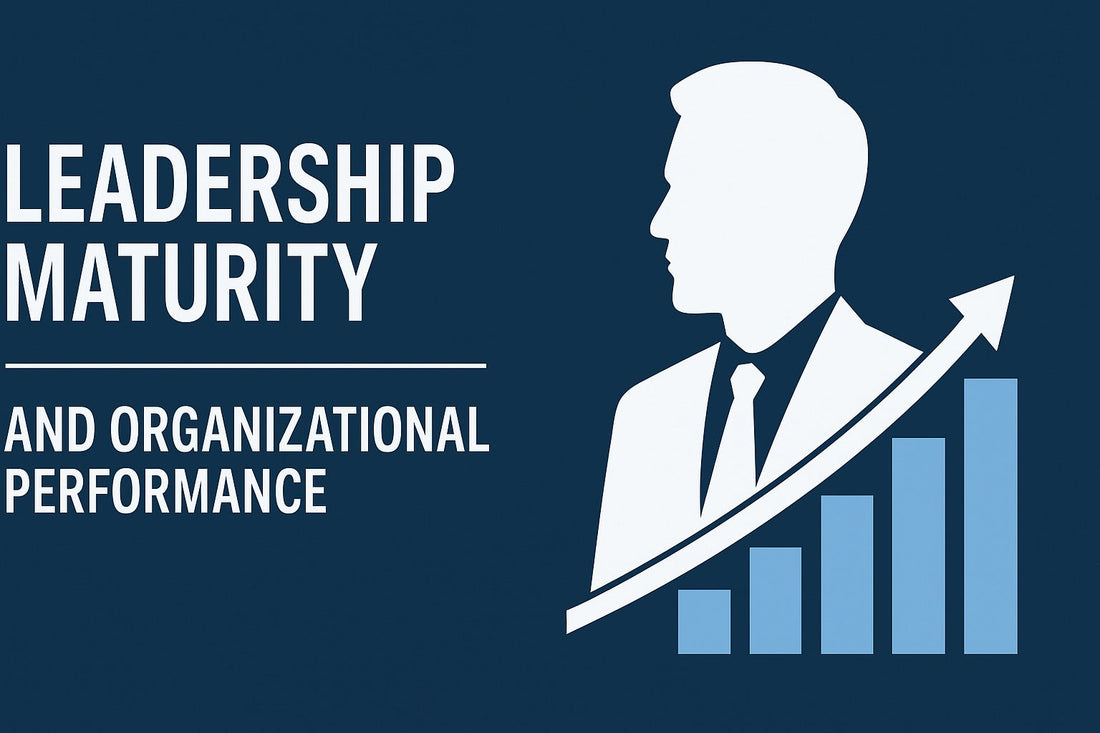
Leadership Maturity: The Key to Organizational Performance and Employee Retention
Share
In today’s fast-paced and competitive world, organizations are realizing that success doesn’t rest only on strategies, processes, or technology—it hinges on leadership maturity. Mature leaders set the tone for culture, inspire trust, and create a resilient environment where employees thrive. When leadership maturity is present, organizations not only perform better but also see reduced employee turnover.
Leadership Maturity and Organizational Performance
Leadership maturity is more than holding a title or position—it is the ability to balance vision with execution, empathy with accountability, and short-term goals with long-term sustainability. Mature leaders demonstrate:
- Clarity of Vision: They articulate clear goals and align teams toward a common purpose.
- Consistency in Decision-Making: Their choices reflect stability and reliability, reducing confusion.
- Emotional Intelligence: They handle conflicts with fairness and empathy, strengthening collaboration.
- Adaptability: They respond to change with agility, setting an example for their teams.
The ripple effect of leadership maturity is higher productivity, stronger cross-department collaboration, and increased innovation. Organizations led by mature leaders are better equipped to navigate crises and seize opportunities.
The Link Between Leadership Maturity and Employee Turnover
Employees rarely leave companies—they leave managers. Immature leadership often results in micromanagement, unclear expectations, and a lack of recognition, all of which fuel disengagement and turnover. On the other hand, mature leadership creates:
- Trust and Psychological Safety: Employees feel safe to voice ideas without fear of judgment.
- Growth Opportunities: Mature leaders mentor, coach, and invest in people’s development.
- Fair Recognition: Contributions are acknowledged and valued, reducing frustration and burnout.
- Work-Life Balance: A humane approach to leadership reduces stress and improves retention.
When employees feel respected and supported, their loyalty to the organization grows. This directly translates into lower recruitment costs, higher morale, and a stronger employer brand.
Change Management in the Leadership Mindset
Top management plays a crucial role in ensuring leadership maturity is not left to chance. Transforming leadership culture requires deliberate change management initiatives that reshape the way leaders think and act. This includes:
- Leadership Development Programs
Structured training, coaching, and mentoring programs help leaders at all levels develop maturity, self-awareness, and communication skills.
- Embedding a Growth Mindset
Encouraging leaders to see challenges as opportunities fosters resilience and continuous improvement.
- Creating Accountability Systems
Performance evaluations should measure not just outcomes, but also leadership behaviors such as collaboration, empathy, and adaptability.
- Leading by Example
Top executives must model the behaviors they expect. When senior leaders demonstrate maturity, middle managers and frontline supervisors follow suit.
- Open Feedback Loops
Introducing 360-degree feedback systems helps leaders understand how they are perceived and where growth is needed.
Conclusion
Leadership maturity is not an optional trait—it’s a competitive advantage. When organizations prioritize mature leadership, they unlock higher performance and retain their best people. By embedding change management into leadership culture, top management ensures that maturity spreads throughout the organization, creating a workplace where both the business and its people thrive.
